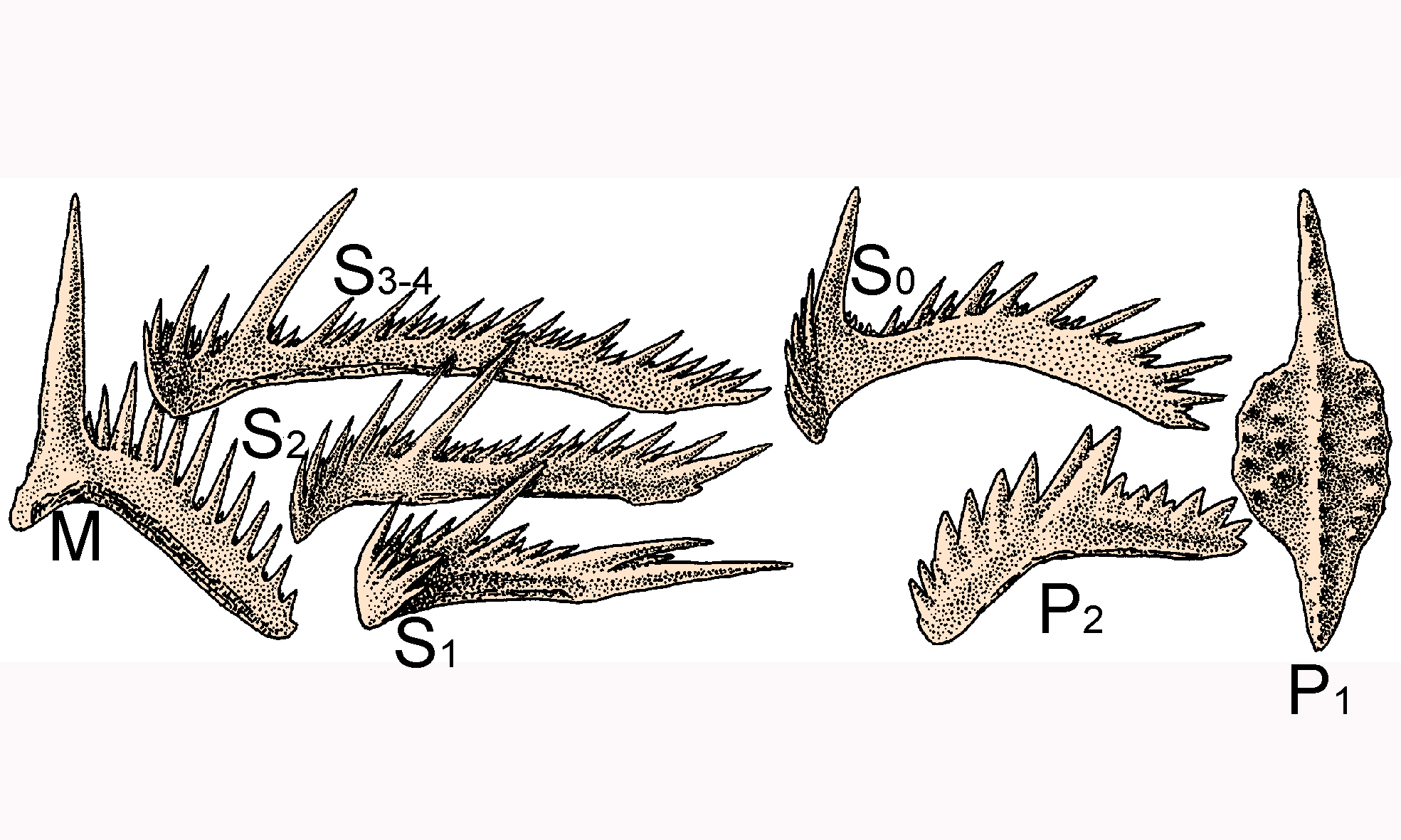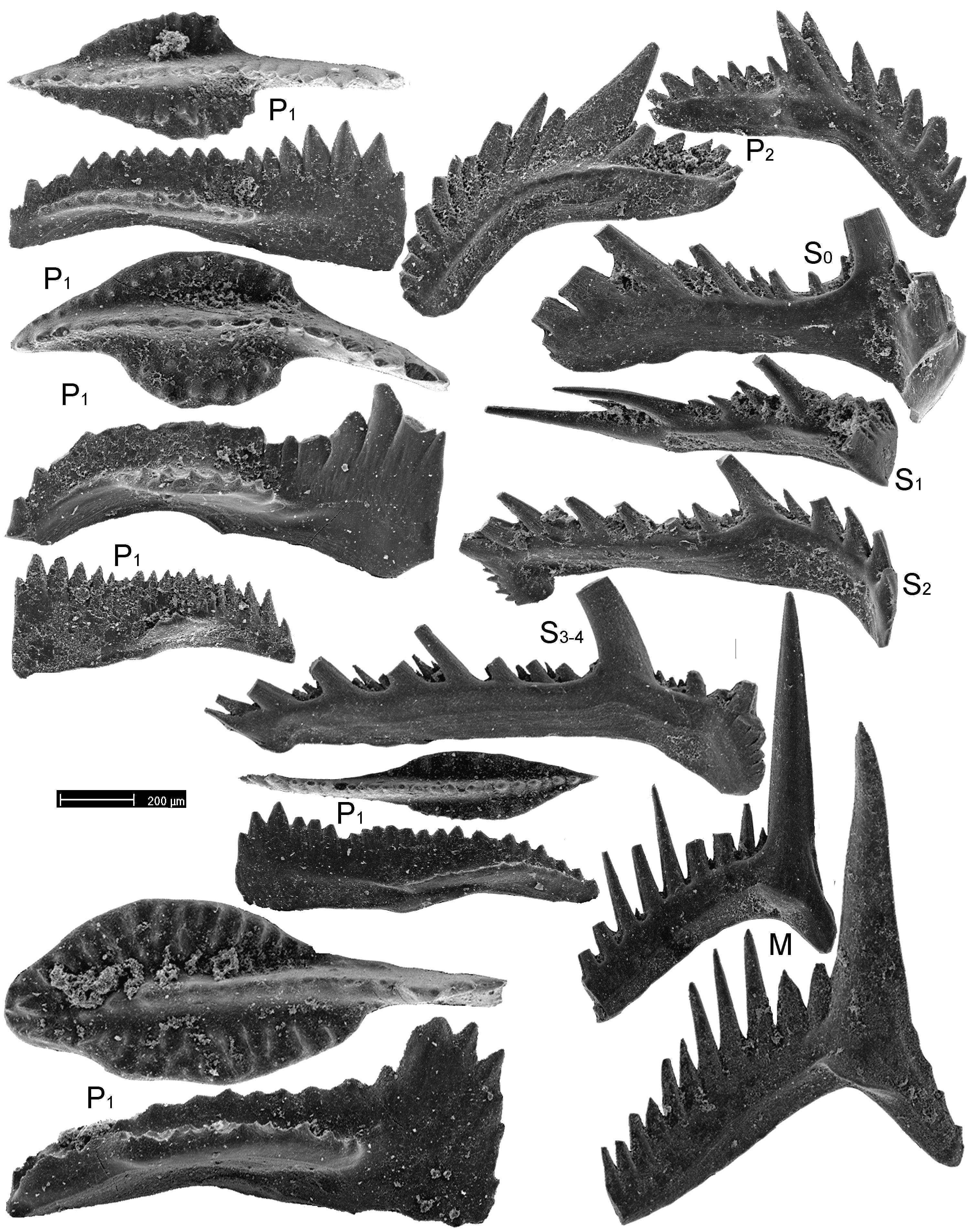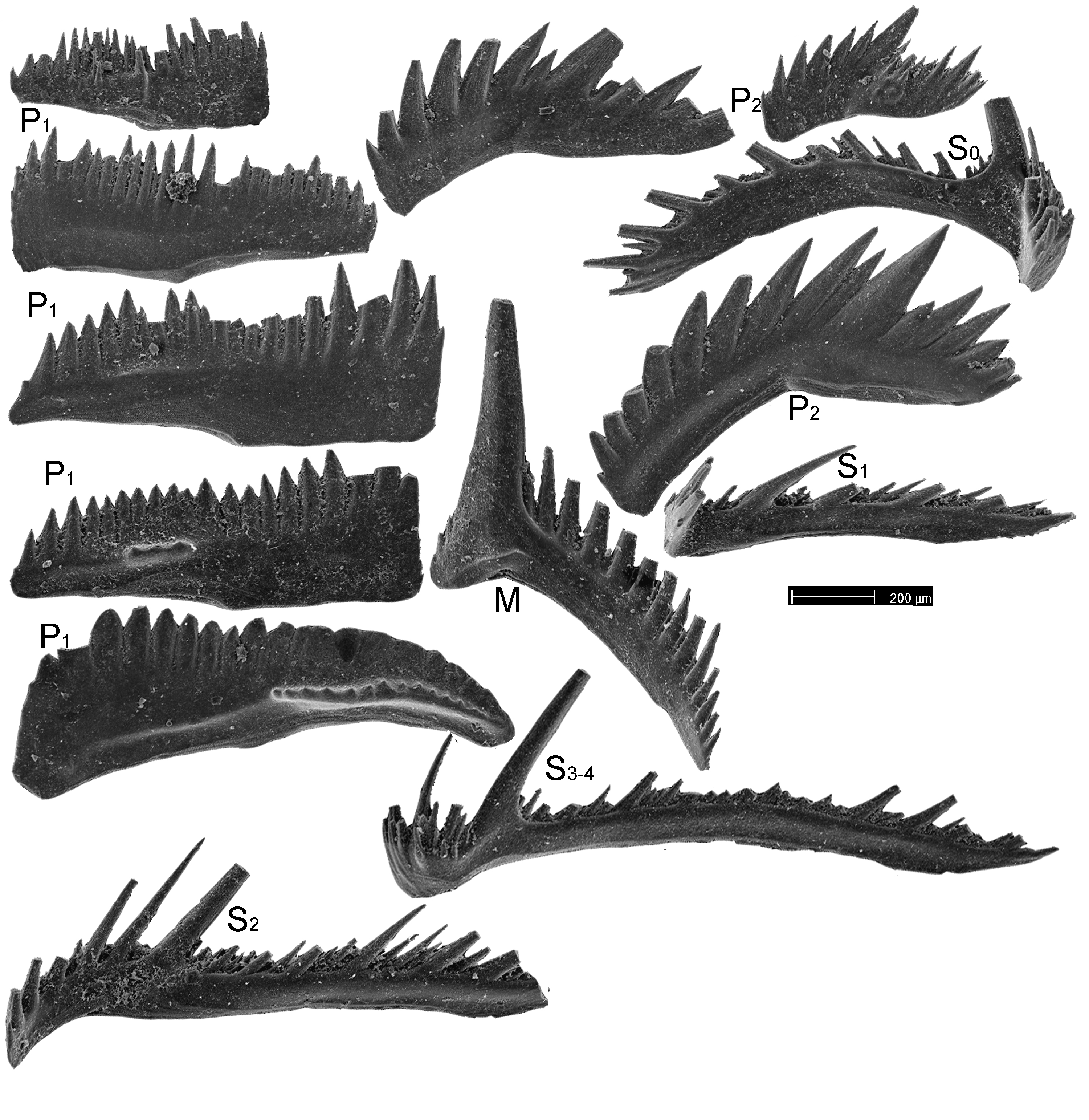Polynodosus transitus Dzik, 2006
Sugerowana cytacja: Dzik 2015. Polynodosus transitus Dzik 2006. Ikonoteka (http://ikonoteka.paleo.pan.pl/xwiki/bin/view/Species/Polynodosus+transitus+)
Diagnoza Platform of the P1 element of variable width, usually weakly developed and restricted to the middle part of the element, its dorsal tip sharply pointed. Porównanie This is a species of a generalized morphology and particular element types of closely similar morphology occur in several other polygnathids. It is the whole apparatus composition (Mehlina-like), not the P1 element alone, that allows to distinguish it from, say, Ctenopolygnathus angustidens. Juvenile specimens of the species are closely similar to those of Mehlina and an incipient platform developes relatively late in their ontogeny in a form of ridges at the middle height of the blade. The tendency to develop peniculus, so characteristic for Mehlina is apparent at early ontogenetic stages.. The morphology of P1 elements is very variable which makes delimitation of the species, both within samples and in respect to its stratigraphic range, difficult. From M. lauriformis probably representing a more advanced stage in the development of the lineage, it differs in having a heart-shaped outline of the platform. However, even in relatively early populations of P. transitus, specimens with elongated platform of laurus-leaf outline occur. They may or may not represent a separate species. In fact, the population from the Lower Łagów Beds is represented by a sample dominated by robust platform elements. Probably this is a result of low juvenile mortality, in opposition to the younger population from Jabłonna, where the platform is missing in most specimens of generally small size. Polygnathus aff. fallax (Helms & Wolska, 1967) from the C. marginifera Zone of Guangxi represents the same species. Autekologia Występowanie geograficzne Widespread in the Holy Cross Mountains Zasięg czasowy C. quadrantinodosa to P. trachytera Zones. Materiały muzealne ZPAL: 5,272 specimens. Literatura Dzik, J. 2006. The Famennian "Golden Age" of conodonts and ammonoids in the Polish part of the Variscan sea. Palaeontologia Polonica 63, 1-359. |
|



